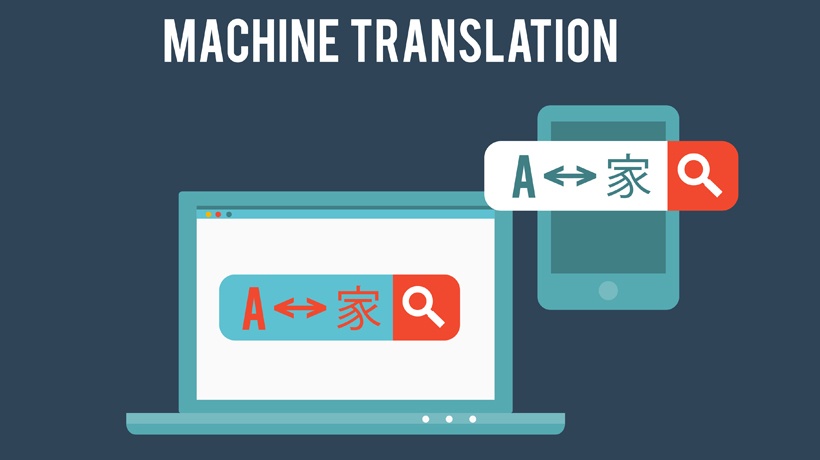Neural Machine Translation: How Important Is It For eLearning Localization?
Creative agencies and Instructional Designers are constantly set against deadlines and deliverables that seem impossible. At one end is “make it great!”, and they press to create great imagery that may be beyond their ability or simply cannot be constructed in time. No problem, designers have been sourcing graphics, fonts, animations, and video clips from various stock libraries for decades and have developed some scrappy solutions to the resource problem. One way or another, designers turn their storyboards into engaging scenes and interactions—on time—by drawing upon tools and inventories of content.

However, this cycle of finding creative solutions in the midst of tight deadlines becomes very complicated when the sponsor wants this L&D content also produced in other languages as part of the process.
The desire of corporations to communicate with international audiences has never been greater. However, transforming content from its source language into content of another language and adapted for another culture (full localization) is not easy. In a modern era where the visual content means as much or more than text, localization must include audio voiceovers, manipulation of graphics, and synchronization efforts for the expansion of text and audio time after the base translation efforts. Unfortunately, in this arena, tools and stock libraries that make the process fast, free, or cheap are very hard to find.
Machine translation is a tool to ease some of the cost and schedule burden for eLearning authors required to provide multi-lingual versions of their content. Many language companies will caution about the quality of Neural Machine Translation – a reputation ranging from “bad” to “terrible” since it’s been widely misused as a “one size fits anything” solution. The results while an object of great humor for the target audience, end up being embarrassing mistakes and a giant miss on communication for the provider. Words like unintelligible, gibberish, and nonsense are commonly associated when Bing or Google Translate are used. This has been the case since Google Translate launched in April 2006.
In the past 5 years, there has been a major revolution in computational linguistics—in fact, the revolution is bigger than that—there is substantial buzz about something called Machine Learning a.k.a. Artificial Intelligence and Neural Networks. In November 2016, the first Neural Machine Translation [NMT] engines started coming out from the research lab. In a little over 2 years, the entire premise about translation engines being bad is now up for serious discussion. Google, Microsoft, Amazon, and others are using these new technologies to cover vast amounts of content they could not previously translate. In some topics, these translations are reaching a status of “acceptable”. In eLearning, we need better than that—but we can still make use of the raised baseline.
Google’s Advances In Neural Machine Translation A Threat To Google SEO Metrics?
The latest generation of NMT output is fairly good given that some important criteria are followed: the engine has sufficient training in (1) the subject matter (terminology), and (2) the natural language nuances in the target language. No better proof of this than in Google’s confession of how its own NMT engine is being used for website translations that can fool its complicated and precious SEO algorithms (fool Google’s Search Algorithms). Since the origin of internet search in the 90s, this has been the technological arms race in digital space: how to be found and get to Page 1 of popular searches. Google has always devalued Neural Machine Translation found in websites, but it is a new ballgame if it cannot distinguish between NMT output and human output.
NMT Applications Within eLearning
Imagine that instead of website advertising, the content is an eLearning course. Are there applications where NMT output can be used for multi-lingual versions?
Short answer, no. Machines still lack the creativity and inspiration to capture and translate the meaning of most creative phrases or any type of relevant cultural idiom. Yet, while you can’t get human-level results from an engine—you can get fairly close. The practice of Post-Editing is needed—a human editor to edit and clean up the rough translation.
The new paradigm is to let the NMT engine take care of the basics, and let the experts in culture and nuance add that last bit of linguistic accuracy. This 1-2 approach cuts down on overall time, and most of the time can reduce the cost as well. We have mature engines that have saved our clients up to 40% of their translation cost in 50% less turnaround time.
Today a good engine needs to be more accurate than verbose. Previously, you would need 1 or 2 million words to train the machine. The older engines were statistical, based on numeric frequencies and customized algorithms. This required lots of data, lots of patience and trial and error—all time-consuming activities that didn’t always result in a successful implementation. As language labs incorporated A.I. learning concepts within neural-based machines, this process became much faster and more productive. Most of all, NMT engines are creating more natural sounding sentences in the target languages. All of this means less time for a Post Editor to smooth out the rough edges of the translation.
People are still very much a part of the process—but those people are now doing things faster, with fewer obstacles and in less time. That allows for 1 person to do the job of 2. We recommend post editing after an engine is mature and knows it’s “domain” well. These are learning systems, so we have to teach them appropriately and maintain them. Curation of content going into the engine is as important as what the output should be—the neural network learns by example, so it is wise to bring your best content to the training sessions.
Consequently, after you have performed a translation from the Engine—you can feed it back to it so it can learn from “an even better” example. If we continue this cycle of continuous improvement—the output will soon be very attuned to the needs of the target audience and a custom translation is much more useful than a generic translation.
In What Situations Does Neural Machine Translation Engine Use Make Sense?
When a customer has (46) courses that they want localized into the same languages, an NMT engine starts to make sense. If the topic (domain) is relatively narrow for a significant number of modules, and that topic has a strong base of past translations (Translation Memory), then an NMT engine can be trained in that language pair. For example, if my courses are all on various instructions using the Microsoft Office Suite then all modules will use a common terminology base, a common style of communication, and there will be existing translation memory from
The Learning & Development professional is facing a growing demand for global adaptations of corporate training content. Download our eBook Creating An Impactful eLearning Localization Strategy: A Complete Guide For L&D Professionals to discover how a great eLearning localization strategy can help you turn your employees into rising stars and unlock their true potential. It also features tips to go global by launching an engaging program for your multicultural workforce.









